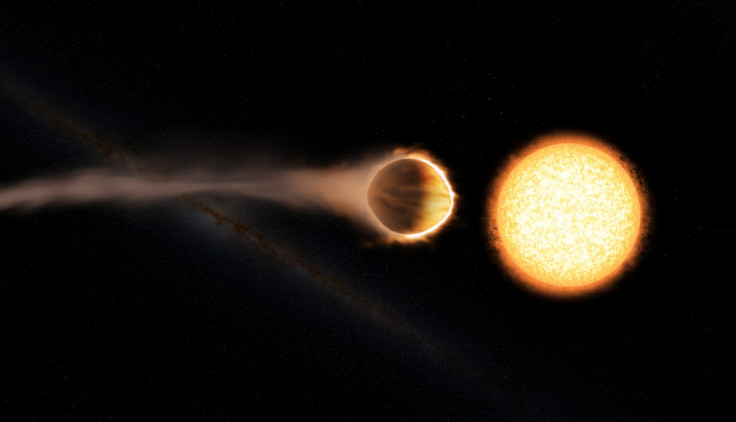Nasa's Hubble detects exoplanet with 'glowing water atmosphere'
The stratosphere of WASP-121b was found to contain glowing water vapour.

Scientists have detected for the first time a large exoplanet with "smoking gun evidence" of a stratosphere.
Researchers led by a team from the University of Exeter made the discovery by studying WASP-121b - an exoplanet in the WASP-121 star system - using Nasa's Hubble space telescope. They made the discovery by observing hot, glowing water molecules in the planet's atmosphere and published their findings in Nature.
WASP-121b is part of a group of planets called "Hot Jupiters", gas giant exoplanets, that make it possible for easy observation and study. Techniques practised on these planets often help scientists fine tune their approach when looking at smaller, potentially life-bearing planets.
WASP-121b's stratosphere was studied by analysing how the brightness of the planet changed with different wavelengths of light in the stratosphere where the temperature increases as the altitude increases, reports phys.org.
The stratosphere in 121b's atmosphere holds water vapour that responds to wavelengths of light in predictable ways depending on temperature differences. "Infrared radiation emitted from a planet contains information about the chemical composition and vertical temperature profile of its atmosphere," says the paper.
If there is a stratosphere over the planet, there must be a noticeable difference in temperature in the upper layers of the atmosphere to its lower layers. It must be hotter in the upper layers and cooler as it goes towards the surface.
Water molecules in the upper part of 121b's atmosphere block out infrared radiation coming from the planet and out into space, but at higher temperatures, they were found to be glowing instead, a sign of temperature difference which has been theorised as the presence of a stratosphere.
"When we pointed Hubble at WASP-121b, we saw glowing water molecules, implying that the planet has a strong stratosphere," said Dr Tom Evans, lead author and research fellow at the University of Exeter.
WASP-121b is about 900 light years away and is about 1.2 times the size of Jupiter. It is also closer to its star than Mercury is to the sun, making an orbit every 1.3 days, leaving the top portion of the atmosphere at a temperature of 2,500 Celsius, according to Nasa. On WASP- 121b, iron exists in a gaseous form.
It has been theorised by researchers that the stratosphere of 121b could contain vanadium oxide and titanium oxide gases. They are good for trapping heat at visible wavelengths and considering how hot it gets on the planet, the conditions are right to maintain them in a gaseous state.
© Copyright IBTimes 2025. All rights reserved.





















